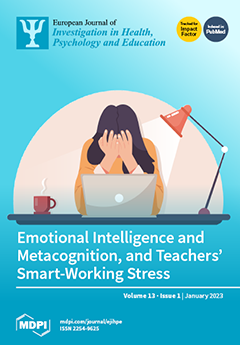Research has shown that higher levels of physical activity are associated with better cognitive performance in children. However, the benefits of physical activity on academic achievement and specifically on mathematics performance need to be further explored. Therefore, this study aimed to investigate the
[...] Read more.
Research has shown that higher levels of physical activity are associated with better cognitive performance in children. However, the benefits of physical activity on academic achievement and specifically on mathematics performance need to be further explored. Therefore, this study aimed to investigate the effects of a complex physical activity (CPA) intervention program, including cognitive involvement, on children’s mathematics performance. The participants were 128 children (aged 12–13 years) attending third grade in three middle schools. They were randomly allocated into a CPA intervention (n = 64) or a waitlist control group (n = 64), the latter of which was given a regular and easy-to-perform activity program. At baseline and after the intervention, students’ physical fitness was measured using a battery of standardized motor tests (20 m shuttle run test, curl-up test, push-up test, and sit and reach test). In addition, the AC-MT 11-14 test was administered to allow a standardized and comprehensive assessment of arithmetic problem-solving and arithmetic reasoning abilities. In comparison to the control, the intervention group showed significant improvements (
p < 0.001) in comprehension and production (
d = 1.88), arithmetic reasoning (
d = 2.50), and problem solving (
d = 1.32), as well as in 20 m shuttle run test (
d = 1.81), push-up test (
d = 1.88), curl-up (
d = 3.52), and sit and reach (
d = 2.52). No significant changes were found in the control group. In conclusion, findings showed that a 12-week CPA intervention program can improve mathematical performance in children in the third grade of middle school. CPA intervention may be an effective method to improve academic performance and avoid student failure.
Full article






